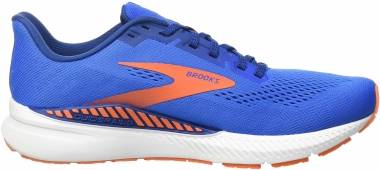
In your 12-week strength training program, you will gradually increase the weight, reps and sets you do. Start with the low end of the rep range and increase one set or 1-2 reps per week. If you can gain more weight than what you currently use, your workout will be intense.
Level 1
The first level of a 12 week strength training program focuses on fundamental strength training and proper movement patterns. It's designed to give you a solid foundation for advanced lifts. You'll learn new movements in this phase and have the chance to lift more weight. These exercises should be performed two to four times a week. However, you may find it more beneficial to do them on more days.
Each training session will end with a decompression circle that includes static and active stretches. This circuit helps to recover from intense training, and improves mobility. The circuit takes around five minutes and allows your body to adjust to life outside the gym.

Tracking your macronutrients
For building muscle and shedding fat, it is crucial to monitor your macronutrients. If you know exactly how many calories your body consumes and how much of each, you can adjust your diet to maximize your results. Additionally, you can track your macronutrients and determine if your macronutrient requirements are being met.
It can seem difficult at first but tracking your macronutrients is a great way to make it easier. First, think about how much you eat each day. Ideally, you should consume around 2,640 calories a day. This is around 10% more than your regular calorie intake.
Exercises to increase strength
When performing strength training exercises, there are many things you should remember. The duration of rest between sets is crucial to the success of the workout, and should be between thirty to sixty seconds. Intermediate lifters may prefer to rest for longer periods of time between sets, but you can always add in a few seconds to push yourself further. The best idea is to alternate workouts B and A during the first week.
One of the most basic exercises you can perform to build strength is the squat. This exercise activates your glutes. To get a great workout, you should do 1-3 sets of 8-12 repetitions. Another exercise that is effective for building strength is the plank. The plank strengthens your back chest, shoulders, and upper arms and can also help improve core strength.

Taking progress pictures
You can track your progress by taking progress photos if you're following a 12-week strength-training program. To ensure you take progress photos, there are a few key steps. First, choose a time that is convenient for you to take progress photos. Find a full length mirror and ensure that the lighting is adequate. Third, ensure you have the same outfit each time that you take a progress photograph. Then, make sure to pose in different ways, including flexing and relaxed poses.
Take progress pictures to begin documenting your journey. You should start by taking your first set of progress pictures, and then repeat this process every four weeks. You should try to take photos at the exact same time, with the same outfit and from the same angle. This will allow you to compare the photos side by side and see how you have changed. This can help you stay focused and on the right track.
FAQ
Are there any exercises that I shouldn't do or should I?
Before beginning any new workout program, consult your doctor. You may have injuries or other medical conditions that prohibit you from exercising in certain ways. Also, some activities require special equipment or training. Swimming requires you to have a swimsuit and access to the pool.
What are Cardio Exercises?
Cardiovascular exercises require your heart and lungs work harder than usual. These include swimming, running, bicycling or rowing. These activities help you burn fat and increase your metabolism. They are also great ways to keep fit.
How does caffeine affect my sleep?
Caffeine can affect how quickly you fall asleep, and how well you sleep. Caffeine causes drowsiness, which makes falling asleep easier. The downside is that caffeine keeps you awake longer making it harder for you to fall asleep again. Instead of drinking coffee or energy drinks just before bed, you might consider having them in the evening.
Statistics
- Physical activity confers the following maternal and fetal health benefits: a decreased risk of pre-eclampsia, gestational hypertension, gestational diabetes (for example, 30% reduction in risk) (who.int)
- One study showed that adults who watch more than 4 hours of television daily had an 80% higher risk of death from cardiovascular disease. (heart.org)
- Adolescent girls were less active than adolescent boys, with 85% vs. 78% not meeting WHO recommendations of at least 60 minutes of moderate to vigorous intensity physical activity per day. (who.int)
- Globally, 81% of adolescents aged 11-17 years were insufficiently physically active in 2016. (who.int)
External Links
How To
How to burn belly fat faster
Belly Fat is usually seen as a problem when we want to lose weight. However, Belly Fat can be beneficial if you really think about it. It's the amount of fat stored around your stomach that protects your organs from getting damaged. Let's look at how to rapidly lose belly fat.
Stress and inactivity are two of the major factors that cause us to store body fat. The cortisol hormone stimulates stress which makes us hungry. Cortisol is responsible for an increase in insulin levels. The excess calories are stored as fat by insulin. An increased appetite can be caused by a lack of sleep. Exercise helps to break down these extra calories.
There are many methods to lose belly fat. Any one of these can be tried, depending on how much you have to spend. These are some great tips to help you lose belly fat fast.
-
You can eat less. Eat smaller meals throughout the day rather than eating three big ones. This will help you consume less calories.
-
Make sure you drink plenty of water. Water helps flush out toxins from the body and keeps you hydrated. Drinking water prior to every meal will ensure that you are satisfied for longer periods of time and won't eat too much.
-
Avoid unhealthy snacks. If you're looking for quick fixes, snack foods like chips, cookies, candies, etc. might seem tempting. These sugary treats have lots of empty calories so avoid them. Choose healthy options like whole grains, fruits, vegetables, nuts, seeds and nuts.
-
Do strength training exercises at least three times per week. Strength training builds muscle mass that burns more calories, even when it is done while you rest. Strengthening your bones, muscles as well ligaments, joints, tendons, heart and lungs.
-
Move regularly and stretch. Stretching improves flexibility and mobility which can reduce back pain. Walking is great for burning calories, especially brisk walking for 30 minutes.
-
Reduce alcohol intake. Avoid alcohol.
-
Slowly lose weight. The first step towards losing weight is to identify what your current weight is. Next, calculate your ideal weight by adding between 5% and 10% to your total body weight. Once you have determined your ideal weight, you can start to reduce your calorie intake by 500-1000 calories per day until you reach it.
-
Avoid processed foods. These foods contain high levels of sugar, salt, and preservatives. Although they are convenient, processed foods don't have enough nutrients to sustain your health.
-
Don't skip breakfast! Breakfast is good for your concentration, memory, and energy. Protein (like eggs), fiber and complex carbohydrates (like oatmeal) should be included in breakfast.
-
Have regular bowel movements. Constipation and irregularity can cause gas and bloating. Drink plenty of water to prevent gas and fiber ingestion.